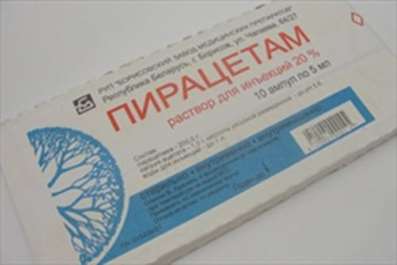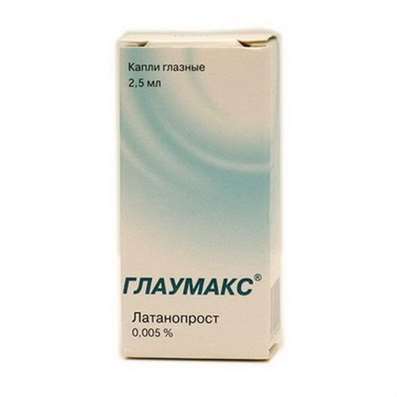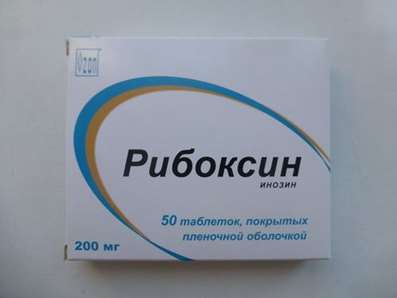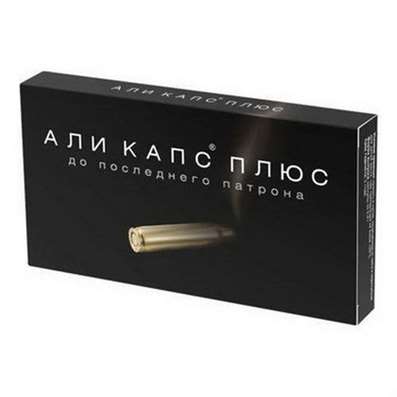Instruction for use: Belatacept
I want this, give me price
Trade name of the drug – Nulojix
The Latin name of the substance Belatacept
Belataceptum (genus. Belatacepti)
Pharmacological group:
Immunosuppressive drugs
The nosological classification (ICD-10)
T86.1 Kidney transplant death and rejection: Reaction of acute rejection of a transplanted kidney; Refractory tissue rejection in patients after allogeneic kidney transplantation
Z94.0 Presence of transplanted kidney: Allogeneic kidney transplantation; Allogeneic kidney transplant; Kidney allograft; Allotransplantation of the kidney; Kidney Transplantation
Characteristics of the substance Belatacept
Immunosuppressive means. Belatacept is a soluble protein consisting of a modified extracellular domain of antigen-4 cytotoxic T-lymphocytes (CTLA-4), in which two amino acids (leucine in 104 positions for glutamic acid, alanine in 29 positions for tyrosine) With part of the Fc fragment of human IgG1. Belatacept is a recombinant protein obtained using genetic engineering techniques on isolated mammalian cell culture.
Pharmacology
Mode action - Immunosuppressive.
Pharmacodynamics
Belotacept selectively modulates the key costimulatory signal required for the complete activation of T-lymphocytes. Activated T-lymphocytes are the main mediators of the immunological response to the rejection of the transplanted organ. To fully activate T-lymphocytes, 2 signals from antigen-presenting cells are required: the first is through the recognition of a specific antigen by T-cell receptors (signal 1); A second (nonspecific) costimulatory signal by binding CD80 and CD86 molecules expressed on the surface membrane to CD28 receptors expressed on the T lymphocyte membrane. Beltacept specifically blocks the interaction of CD28 with CD80 and CD86, selectively inhibiting the key costimulatory signal required for the activation of T lymphocytes. As a result of modification of the CTLA-4 fragment, belatacept binds more actively to CD80 and CD86 molecules than the original form of CTLA4-IgG1. This allows to achieve the level of immunosuppression necessary to suppress graft rejection and prevent its dysfunction.
In studies in vitro, belatacept inhibited the proliferation of T lymphocytes and reduced the production of cytokines (IL-2, interferon-γ, IL-4, and TNF-alpha). Inhibition of the response of T-lymphocytes to the allogeneic antigen is the most important factor preventing transplant rejection. In preclinical studies on kidney transplantation in primates, belatacept in the form of monotherapy or in combination with standard therapy significantly increased the graft lifetime compared to placebo, reducing the production of antibodies against the antigens of the donor organ.
Pharmacokinetics
Below are the values of pharmacokinetic parameters (mean values and confidence intervals) in healthy volunteers after a single administration of 10 mg / kg (n = 15); Patients with a transplanted kidney after repeated administrations of 10 mg / kg1 (n = 14) and patients with a transplanted kidney after repeated administrations of 5 mg / kg2 (n = 14).
Cmax (mkg / ml): 300 ± 77 (190-492); 247 ± 68 (161-340) and 139 ± 28 (80-176).
AUC3 (mkg · h / ml): 26,398 ± 5175 (18964-40684); 22252 ± 7868 (13575-42144) and 14090 ± 3860 (7906-20510).
T1 / 2 (days): 9.8 ± 2.8 (6.4-15.6); 9.8 ± 3.2 (6.1-15.1) and 8.2 ± 2.4 (3.1-11.9).
Systemic clearance (ml / h / kg): 0.39 ± 0.07 (0.25-0.53); 0.49 ± 0.13 (0.23-0.7) and 0.51 ± 0.14 (0.33-0.75).
Apparent Vss (l / kg): 0.09 ± 0.02 (0.07-0.15); 0.11 ± 0.03 (0.067-0.17) and 0.12 ± 0.03 (0.09-0.17).
1Dose 10 mg / kg was administered on day 1 - day of operation, before transplantation; 5, 14 and 28 days after transplantation.
2 A dose of 5 mg / kg was administered once every 4 weeks (± 3 days), beginning at the end of the 16th week after transplantation.
3For patients with kidney transplant, the AUC was determined after multiple administrations at intervals of 4 weeks.
The pharmacokinetics of belatacept in healthy volunteers and patients with a transplanted kidney was comparable. With a single intravenous infusion of healthy volunteers, there was a proportional increase in the values of Cmax and AUC in the dose range from 1 to 20 mg / kg. The serum concentration reaches the equilibrium state at the 8th week when administered in the early posttransplant period and remains stable with constant therapy for 6 months. In the determination at 1, 4 and 6 months after transplantation, the mean Cmin values were 22.7 (11.1-45.2); 7,6 (2,1-18) and 4 (1,5-6,6) μg / ml, respectively.
The pharmacokinetics of belatacept did not change with its use for 1 year after kidney transplantation. C min of belatacept was maintained for 5 years after transplantation against the background of the recommended regimen of therapy with belatacept.
Systemic cumulation of belatacept in the body was minimal with prolonged repeated administration of the drug in a dose of 5-10 mg / kg at intervals of 1 month.
Pharmacokinetics in special categories of patients
It was found that higher clearance of belatacept is observed in patients with increased body weight.
Age, sex, race, kidney function (assessment of the value of glomerular filtration), liver function (evaluation of albumin concentration), diabetes mellitus, and dialysis sessions do not affect the clearance of belatacept.
Application of the substance Belatacept
Belatacept in combination with GCS and mycophenolate mofetil is used to prevent rejection of kidney transplant in adults. Before the beginning of this therapy, the appointment of an antagonist of IL-2 receptors (basiliximab) is recommended.
Contraindications
Hypersensitivity to belatacept; Seronegative or unidentified serological status with respect to the Epstein-Barr virus; Lactation period; Age to 18 years (safety and efficacy not established).
Restrictions
Belatacept should be used with caution in patients with chronic recurrent infections; States predisposing to infections (diabetes mellitus). The introduction of belatacept should be discontinued in the event of the development of an infectious disease.
Pregnancy and breast-feeding
There is insufficient information on the use of belatacept in pregnant women. Beltacept can be used in pregnancy only if the potential benefit to the mother is greater than the potential risk to the fetus.
There is also no data on whether belataceptum penetrates into breast milk. In this regard, breast-feeding with the use of belatacept should not be.
The action category for fetus by FDA is C.
Side effects of Belatacept
The following are undesirable drug reactions (NLR) when using belatacept in clinical trials. NLRs are presented for organs and systems and frequency: very often (≥10%); Often (≥1% and <10%); Infrequently (≥0.1% and <1%); Rarely (≥0.01% and <0.1%).
Infections and invasions: very often - urinary tract infections, upper respiratory tract infections, bronchitis, nasopharyngitis, CMF infection; Often - sepsis, gastroenteritis, simple and herpes zoster, candidiasis, incl. Oral flu, influenza, lower respiratory tract infections, pneumonia, rhinitis, sinusitis, pyelonephritis, wound infections, poliovirus infections, onychomycosis, viral gastroenteritis, inflammation of subcutaneous tissue, multicolored lichen, infection caused by Escherichia coli, localized infections; Infrequently - nephropathy caused by polyomavirus, genital herpes, staphylococcal infections, CMF-colitis, progressive multifocal leukoencephalopathy, fungal infection of the central nervous system.
Benign and malignant tumors (including cysts and polyps): often - cutaneous papillomas, squamous cell carcinoma of the skin, basal cell carcinoma, lymphocele; Infrequently, lymphoproliferative disorders caused by the Epstein-Barr virus.
On the part of the organs of hematopoiesis: very often - anemia, leukopenia; Often - thrombocytopenia, neutropenia, leukocytosis, lymphopenia, polycitopenia; Infrequently monocytopenia.
From the immune system: often - a decrease in the concentration of IgG, a decrease in the concentration of IgM.
Metabolic disorders: very often - hypophosphatemia, hypokalemia, hyperkalemia, dyslipidemia, hyperglycemia, hypocalcemia, hypercholesterolemia; Often - hypomagnesemia, hyperuricemia, increase or decrease in body weight, acidosis, diabetes, dehydration.
Mental disorders: very often - insomnia, anxiety.
Neurological disorders: very often - headache; Very often - tremor, paresthesia; Infrequently - encephalitis, Guillain-Barre syndrome.
From the CVS: very often - arterial hypertension, arterial hypotension; Often - venous thrombosis, tachycardia, bradycardia, hematomas, atrial fibrillation.
On the part of the respiratory system: very often - cough, dyspnea; Often - hoarseness, pain in the oral cavity and larynx, pulmonary edema.
From the digestive tract: very often - constipation, diarrhea, nausea, vomiting, abdominal pain; Often - stomatitis, incl. Aphthous, dyspepsia, gastritis; Infrequently - gastrointestinal disorders.
From the liver and bile ducts: often - increased activity of liver enzymes, cytolytic hepatitis.
From the skin and subcutaneous tissue: often - acne, pruritus, alopecia, rash, hyperhidrosis, increased night sweating, skin damage.
From the osteomuscular system and connective tissue: very often - arthralgia, back pain, pain in the limbs; Often - myalgia, musculoskeletal pain.
From the side of the kidneys and urinary tract: very often - an increase in the concentration of creatinine, proteinuria, dysuria, kidney transplant dysfunction; Often - necrosis of the renal tubules, chronic nephropathy of the kidney transplant, thrombosis of the renal vein, hematuria, proteinuria, hydronephrosis, renal failure, urinary incontinence; Often - thrombosis of the renal artery.
General symptoms and reactions at the injection site: very often - pain when administered, pain at the injection site, peripheral edema, fever; Often - fatigue, poor health, chest pain, divergence of the edges of the wound, thrombosis of arteriovenous fistula.
In clinical studies in more than 2% of patients, the following serious adverse events were observed by the 3rd year of the use of belatacept: urinary tract infections, CMF infection, fever, increased serum creatinine concentration, pyelonephritis, diarrhea, gastroenteritis, kidney transplant dysfunction, leukopenia , Pneumonia, anemia, basal cell carcinoma, dehydration.
The most frequent adverse reactions (more than 20% of patients) to the 3rd year of use of belatacept were diarrhea, anemia, urinary tract infections, peripheral edema, constipation, hypertension, fever, nausea, transplant dysfunction, cough, vomiting, leukopenia, hypophosphataemia And a headache.
Undesirable reactions, such as renal thromboembolism and CMF infection, developed in the third year of treatment with belatacept, resulted in discontinuation of therapy or withdrawal of the drug in more than 1% of patients.
Interaction
Belatacept is a recombinant protein that is not metabolized by cytochrome P450 and UDF-GT enzyme systems, and therefore it is not expected that it has the ability to induce inhibition or induction of these enzymes. In addition, when the activity of cytochrome P450 or UDF-GT isoenzymes changes as a result of taking concomitant medications, no effect on metabolism and elimination of belatacept is expected.
When the dose of mycophenolate mofetil is administered, the lifetime of mycophenolic acid (the active metabolite of mycophenolate mofetil) is approximately 40% higher when co-administered with belatacept than when combined with cyclosporine, since belatacept does not interfere with hepatoenteric mycophenolic acid recycling. The clinical significance of the increase in the lifetime of mycophenolic acid is unknown.
Immunosuppressive therapy decreases the effect of vaccination.
Belatacept cannot be administered concomitantly with other drugs through a single infusion system.
Overdose
Belatacept is administered as an intravenous infusion under medical supervision. Doses up to 20 mg / kg did not cause obvious toxic effects.
In case of an overdose, it is recommended that the doctor be observed and, if necessary, symptomatic treatment. No cases of overdose have been reported.
Routes of administration
IV.
Special instructions
Post-transplant lymphoproliferative disorder
When appointing belatacept, the risk of posttransplantation lymphoproliferative disease increases (primarily with the involvement of the central nervous system). Special attention should be given to patients with newly diagnosed neurological and cognitive disorders and behavioral changes, as well as worsening of the already existing symptomatology.
In clinical studies, the use of belatacept in patients seronegative for the Epstein-Barr virus led to a significantly higher incidence of post-transplant lymphoproliferative disease compared with seropositive patients. Therefore, before the appointment of belatacept should determine the serological status of the patient for this virus. Contraindicated in the use of belatacept in patients with seronegative or unidentified serological status.
Other risk factors for the development of post-transplant lymphoproliferative disease are CMF infection and the use of antilymphocytic drugs in the case of acute rejection of the transplant. Care should be taken when using these drugs. It is recommended to prevent CMF infection for at least 3 months after the kidney transplantation surgery.
Infections
The use of immunosuppressants, including belatacept, may increase the sensitivity to bacterial, viral, fungal and protozoal infections, including opportunistic infections, tuberculosis, herpes, which can lead to serious, including. Fatal, consequences. Prevention of CMF infection is recommended for at least 3 months after transplantation, especially in patients at risk. Prevention of PCP is recommended for at least 6 months after transplantation. Before the appointment of belatacept, a skin tuberculin test should be performed to detect the presence of tuberculosis infection. If there is a positive reaction before the appointment of belatacept, standard antituberculous therapy should be performed.
Progressive multifocal leukoencephalopathy (PML)
PML is a rare opportunistic infection of the central nervous system caused by JC-polyomavirus. PML is usually diagnosed by brain scans using MRI or CT, as well as by examining the cerebrospinal fluid for the presence of JC-poliomavirus DNA by the polymerase chain reaction method. In case of suspicion of PML and if it is impossible to confirm the diagnosis by standard methods, a brain biopsy can be used. Special attention should be paid to patients with newly diagnosed symptoms of neurological and cognitive disorders, as well as to patients with behavioral changes and cognitive disorders. If PML is detected, the patient should consider reducing the dose of immunosuppressive therapy or canceling it, taking into account the risk of rejection of the transplanted kidney.
Nephropathy caused by the polyoma virus
In view of the increased risk of developing nephropathy caused by polyomavirus, monitoring is necessary to identify the risk of developing this disease in patients receiving immunosuppressive therapy. When identifying signs of viral nephropathy, the possibility of reducing immunosuppressive therapy should be considered in accordance with the recommendations for the use of mycophenolate mofetil. The dosage regimen of belatacept is not advisable to modify; The reduction of its doses and the change in the dosage regimen in clinical studies have not been studied.
Tumors
In connection with the increased risk of developing malignant tumors, including skin cancer, patients with immunosuppressants should protect the skin from exposure to UV radiation.
Allergic reactions
Allergic reactions to the administration of belatacept were observed in 5% of patients receiving belatacept for 3 years. If a serious allergic reaction or anaphylaxis occurs, the use of belatacept should be discontinued.
Vaccination
During treatment with belatacept and within 3 months after its cancellation, vaccination with live vaccines should not be carried out. Medications that affect the immune system, including belatacept, may reduce the effectiveness of vaccination.
Influence on the ability to drive vehicles and work with mechanisms. Influence on the ability to drive vehicles and work with mechanisms is not established. The patient should be informed that with the development of malaise and weakness during the treatment period, it is necessary to refrain from driving motor vehicles and practicing potentially dangerous activities that require an increased concentration of attention and speed of psychomotor reactions.

 Cart
Cart





